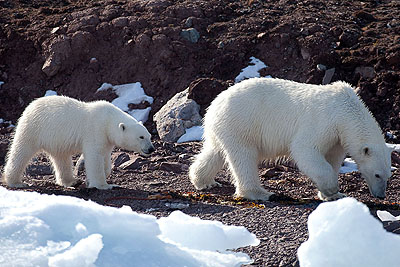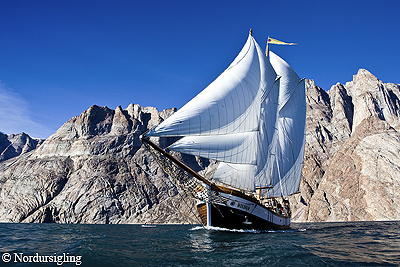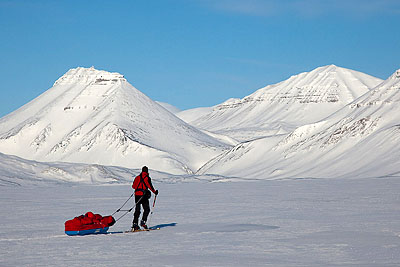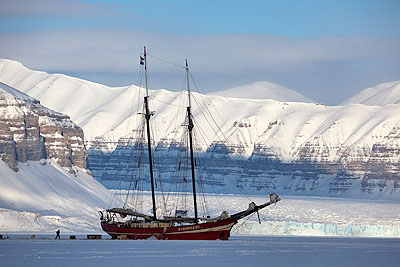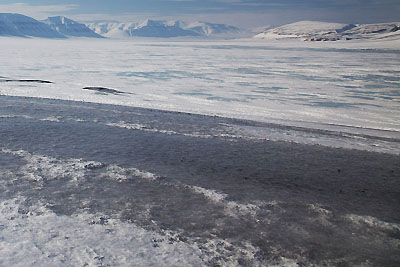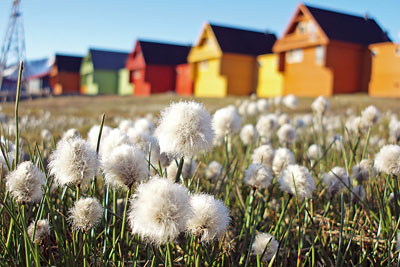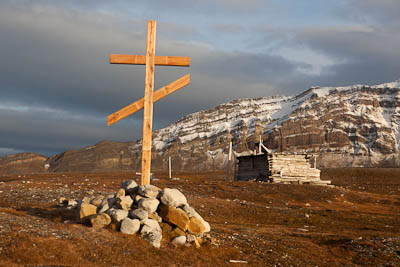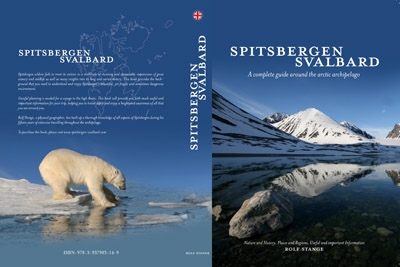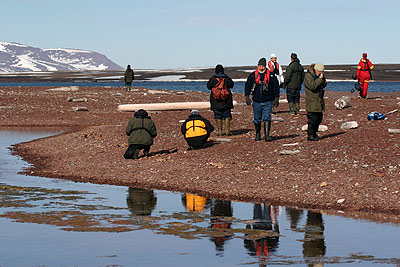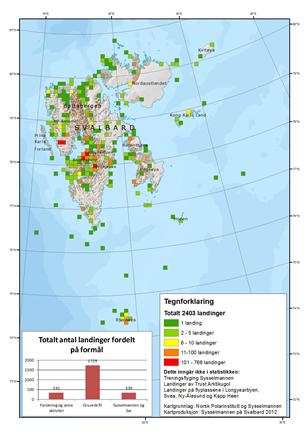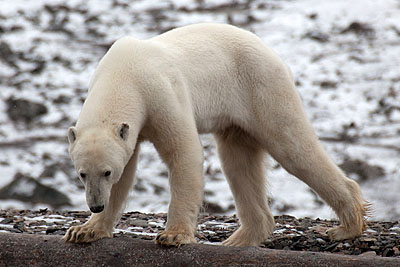-
current
recommendations- Liefdefjord
New page dedicated to one of Spitsbergen's most beautiful fjords. Background information and many photos.
- New Spitsbergen guidebook
The new edition of my Spitsbergen guidebook is out and available now!
- Liefdefjord
New page dedicated to one of Spitsbergen's most beautiful fjords. Background information and many photos.
Page Structure
-
Spitsbergen-News
- Select Month
- May 2025
- April 2025
- March 2025
- February 2025
- January 2025
- December 2024
- November 2024
- October 2024
- September 2024
- August 2024
- July 2024
- June 2024
- May 2024
- April 2024
- March 2024
- February 2024
- January 2024
- December 2023
- November 2023
- October 2023
- September 2023
- August 2023
- July 2023
- June 2023
- May 2023
- April 2023
- March 2023
- February 2023
- January 2023
- December 2022
- November 2022
- October 2022
- September 2022
- August 2022
- July 2022
- June 2022
- May 2022
- April 2022
- March 2022
- February 2022
- January 2022
- December 2021
- November 2021
- October 2021
- September 2021
- August 2021
- July 2021
- June 2021
- May 2021
- April 2021
- March 2021
- February 2021
- January 2021
- December 2020
- November 2020
- October 2020
- September 2020
- August 2020
- July 2020
- June 2020
- May 2020
- April 2020
- March 2020
- February 2020
- January 2020
- December 2019
- November 2019
- October 2019
- September 2019
- August 2019
- July 2019
- June 2019
- May 2019
- April 2019
- March 2019
- February 2019
- January 2019
- December 2018
- November 2018
- October 2018
- September 2018
- August 2018
- July 2018
- June 2018
- May 2018
- April 2018
- March 2018
- February 2018
- January 2018
- December 2017
- November 2017
- October 2017
- September 2017
- August 2017
- July 2017
- June 2017
- May 2017
- April 2017
- March 2017
- February 2017
- January 2017
- December 2016
- November 2016
- October 2016
- September 2016
- August 2016
- July 2016
- June 2016
- May 2016
- April 2016
- March 2016
- February 2016
- January 2016
- December 2015
- November 2015
- October 2015
- September 2015
- August 2015
- July 2015
- June 2015
- May 2015
- April 2015
- March 2015
- February 2015
- January 2015
- December 2014
- November 2014
- October 2014
- September 2014
- August 2014
- July 2014
- June 2014
- May 2014
- April 2014
- March 2014
- February 2014
- January 2014
- December 2013
- November 2013
- October 2013
- September 2013
- August 2013
- July 2013
- June 2013
- May 2013
- April 2013
- March 2013
- February 2013
- January 2013
- December 2012
- November 2012
- October 2012
- September 2012
- August 2012
- July 2012
- June 2012
- May 2012
- April 2012
- March 2012
- February 2012
- January 2012
- December 2011
- November 2011
- October 2011
- September 2011
- August 2011
- May 2011
- April 2011
- March 2011
- February 2011
- January 2011
- December 2010
- November 2010
- September 2010
- August 2010
- July 2010
- June 2010
- May 2010
- April 2010
- March 2010
- February 2010
- November 2009
- October 2009
- August 2009
- July 2009
- June 2009
- May 2009
- April 2009
- March 2009
- February 2009
- January 2009
- December 2008
- November 2008
- October 2008
- August 2008
- July 2008
- June 2008
- May 2008
- April 2008
- March 2008
- February 2008
- April 2000
- Select Month
-
weather information
-
Newsletter

| Guidebook: Spitsbergen-Svalbard |
Home →
Yearly Archives: 2012 − News
East Svalbard management plan
The exasperating discussion about new regulations for the eastern parts of the Spitsbergen archipelago (Svalbard) is continuing. Driving force behind the process is the Norwegian directorate for nature administration (DN), which belongs to the Department of the Environment in Oslo. Previous proposals of a new management plan elaborated by the DN have even been rejected by the Sysselmannen, the highest representative of the Norwegian government in Spitsbergen, as too weakly based on arguments and too far going in its legal consequences. The revised version is soon to be sent to a public hearing process, but the DN has already proven that it is not interested in the opinion of third parties. Observers say that DN is forcing an ideologically motivated legal process without a strong foundation that should be defined as based on knowledge. Far-reaching restrictions to public access to major areas are argued to benefit science and the environment, according to the DN. According to scientists active in the area, current traffic patterns – which are already strictly regulated – do not pose any problems for scientific work. And as far as the environment is concerned, DN admit themselves that traffic as it is at present and as it will be in the future does not pose any environmental problems that would require principal adjustments of the current access scheme.
The current proposal of a future management plan is based on the version worked out by a working group of the Sysselmannen in late 2011, but the DN wants some of its regulations sharper. An enlargement of a future “Lågøya bird reserve” which would be closed for traffic during the breeding season to the whole island of Lågøya is difficult to understand and exasperating. But more interesting is the fact that the DN wants to move important administrative powers from the Sysselmannen to the DN in Oslo. If the DN get as they want to, then this will include the power to “regulate” traffic in the eastern nature reserves (almost all of eastern Svalbard), which means the DN could in fact close areas by decrete, without any further legal process. Additionally, the DN wants the power to decide on applications for access to the “scientific reference areas”. In contrast to earlier proposals, these areas are no longer supposed to be generally closed to all traffic, but open for all who have been granted permission which everybody can apply for – so far the theory. As all relevant areas can only be visited with permission issued by the Sysselmannen anyway, the question for the motivation of the DN for this step is interesting. It will be safe to assume that the DN intends to restrict the permitting practice drastically, if the application process goes through Oslo rather than the Sysselmannen in Longyearbyen, as it has been so far and would be natural to continue. Observers impute a certain degree of practical knowledge of the local reality to the Sysselmannen, something that is more difficult to believe in the case of the DN in Oslo, judging from their proposals.
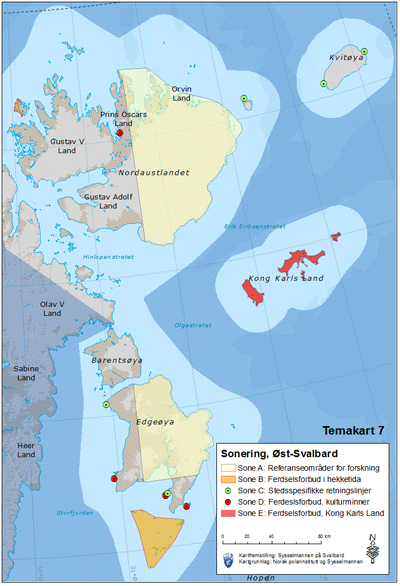
The current proposal distinguishes several zones for eastern Svalbard:
Zone A: »scientific reference area«, which should theoretically be open to visit after application, but will in practice most likely be a no go area for mere mortals.
Zone B: No traffic during the breeding season.
Zone C: Site-specific guidelines will apply.
Zone D: Local bans on traffic at cultural heritage sites, in force since 2010.
Zone E: Kong Karls Land, Kong Karls Land (already off limits).
Click here for a larger version of this map.
Map: Sysselmannen
Species “polar bear” older than believed so far
So far it has been assumed that the species polar bear (Ursus maritimus) has a rather recent origin in the upper Pleistocene, maybe 100.000 or maximum 200.000 years ago. This would indicate a very close relationship to brown bears and a quick adaption to the high arctic environment.
A study recently published in Science has now indicated a much older origin for the species. The authors suggest an evolutionary age of approximately 600.000 years (confidence intervall 338.000 to 934.000 years, mid- to lower Pleistocene). Older studies are supposed to be misled by genetical contamination from cross-breeding, an error source believed to be avoided in the new study.
Polar bears as a species have accordingly had significantly more time to adapt from the sub-arctic habitat of brown bears to the high arctic. If this has any implications for the adaptation time of polar bears to recent changes in environment and climate remains an unanswered question at the time being.
Small polar bear family in Spitsbergen. Their ancestors were already roaming through the ice in mid-Pleistocene times.
Source: Science
East Greenland 2013
Starting in 2013, Rolf Stange and the “Geographische Reisegesellschaft” will be offering trips not only in Spitsbergen, but also in East Greenland. We will spend some days in Ammassalik and then board the Icelandic schooner Hildur to explore Scoresbysund, the world’s largest fjord system, for a week.
The trip will be German speaking. Click here for more info: East Greenland 2013.
Hildur in Scoresbysund, East Greenland.
Big oil is watching Spitsbergen
The oil and gas industry will focus research activities on on-shore areas of Spitsbergen. Even though oil and gas production is unlikely on the islands not only for fragile legal reasons, but also due to more solid geological circumstances: here it is easy to study what is hidden under the sea floor further south in the Barents Sea. The so-called Barents Shelf is believed to have significant potential for hydrocarbon production.
Mainly of interest are Triassic and Jurassic sediments that are rich in organic material and widely spread in central and southeastern parts of Svalbard. Equivalents of these rocks near the Norwegian coast have already turned out to be productive. Several oil companies have already announced their interest to conduct geological excursions to these parts of Svalbard.
Triassic rocks in Sassendalen. These rocks are interesting for the oil and gas industry.
Source: Nettavisen for Geomiljøet
Easter keeps the winter’s promise
After a disappointing early season, the Easter weekend brought dream conditions in Spitsbergen: good terrain conditions for tours and bright sunshine. All those who went out on tours by snow mobile, ski or dog sledge could enjoy wonderful days in a friendly winter arctic. Traditionally, both locals and tourists are out in these days in considerable numbers. Nevertheless, it was a calm weekend for the emergency services: a polar bear that was seen near Longyearbyen turned out to be a reindeer, and an avalanche triggered by a a person on ski did not do any damage.
Even the ice seems to come to the coasts slowly, both the drift in the north and east and the fast ice in the fjords, but not to the degree that is normal in April. The sailing boat Noorderlicht, that is usually frozen in the ice in Tempelfjord, even visited Longyearbyen before Easter, but returned to stay in an ice channel that had been created in 7 hours work with axes and chain saws. The first visitors could already be welcomed on the “ship in the ice”.
The only bad news seems to be rumours about repeated disturbance of a young polar bear family on the east coast of Spitsbergen by inconsiderate or even reckless snow mobile drivers. It is said that these are individual locals from Longyearbyen. Complains have been filed both by other locals and by organised tourist groups.
Ski hiking in Spitsbergen.
The “boat in the ice”
Normally in April, the sailing boat Noorderlicht is frozen in solid ice in Tempelfjord to serve as a destination for snowscooter or dog sledge tours. This year, the “boat in the ice” is a “boat without ice”: until now, the fjords have simply not frozen due to the largely unusually mild weather and the high water temperatures. Before Eastern, Noorderlicht even left Tempelfjord to visit Longyearbyen.
The ice chart shows an unusual lack of fast ice for the season. Normally, most smaller fjords on the west coast and large areas in the east are frozen over with solid fast ice in April. But what is “normal” these days?
The “boat in the ice”: Noorderlicht in Tempelfjorden, April 2010.
Source: Svalbardposten
PCB-concentrations in polar bears on the decrease
Hard to believe, but there are good news for polar bears: biologists from the university of Trondheim (Norway) have done research on tissue samples collected from female polar bears. Their results show that polychlorated biphenyls (PCB) have dropped significantly between 1998 and 2008. The values for young bears are 59 % lower and those of adult females have decreased by 55 %. The actual concentrations are still well capable of doing harm to a bear’s reproductive and immune system, but the trend is without doubt good news.
PCBs have been used worldwide for multiple technical processes, including cooling agents and electric parts. Since 2004, there is a ban on PCB production within the Stockholm convention system that has been signed by most major countries, with a few exceptions, noticeably the USA.
Small polar bear family in summer drift ice north of Spitsbergen.
Source: Universität Trondheim
Glaucous gulls threatened by environmental toxins
Long-lived environmental toxins from industrial processes and conventional agriculture endanger species that are high up in the food chain, including polar bears, ivory gulls and glaucous gulls. This is well known and a number of studies have been made on the phyiological effects of the harmful substances, which in the arctic are especially long-lived because of the cold temperatures, on the individual animal.
Scientists from the Norwegian institute for research on nature (NINA) have now tried to quantify the effects on a population level. The study has been made on glaucous gulls on Bear Island. One of the results is that glaucous gulls with high levels of toxins have alarming annual survival rates of only 40-50 %.
Every year, dead glaucous gulls are found on Bear Island that have high values of relevant substances in their tissues. Due to its position and local climate, Bear Island has some of the highest concentrations of environmental toxins in the whole Arctic.
Sampling a skua on Bear Island.
Source: NINA
Bad winter season
The warm and wet winter weather has so far gone badly over the season. Both tourists and local touring enthusiasts are suffering from bad terrain conditions. Several spells of temperatures well above freezing and heavy rain have turned snow into ice. The fjords have largely remained open, rather than freezing over. Popular destinations such as Kapp Linné and Noorderlicht, the “boat in the ice” which is normally frozen in fast ice in Tempelfjord in mid March, can hardly be reached. The situation demands a lot of flexibility from tourists and tour operators.
Blue ice instead of snow: then it is better to stay at home.
Source: Svalbardposten (1112)
Drug abuse in Longyearbyen
In autumn last year the police caught 11 young people in Longyearbyen with drugs. 10 of them have by now been sentenced to fines or prison up to 60 days (partly suspended). Next to owning and selling amounts of up to 100 g of cannabis, one person was also charged for breaching laws regulating firearms because of improper storage. Two persons were expelled from Spitsbergen for up to 4 years. The local newspaper Svalbardposten found out last year (after the drug razzia) in an internet poll that 911 out of 1060 readers are in favor of expelling drug users and dealers from Spitsbergen.
The criminality level is comparatively minor and mainly directed at covering own demands, but has to be seen in the context of a small, isolated town with many young inhabitants. The cannabis was smuggled from Norway to Longyearbyen by mail.
In Longyearbyen, grass is not only growing on the tundra.
Source: Sysselmannen, Svalbardposten (1112)
Research permission denied
It seems as if permission for archaeological research is now more often denied than given. In summer 2011, veteran Russian archaeologist Vadim Starkov wanted to excavate a Pomor site in Bettybukta in southern Spitsbergen, but did not get permission from the Sysselmannen. Now another application from Starkov was turned down. Starkov wanted to document a Russian shipwreck, probably dating into the 18th or early 19th century, in Van Mijenfjorden. Parts of the wreck were probably used as firewood or building material. The wreck is lying on dry ground, but is mostly covered with soil. The intention was to remove the soil, document the wreck and cover it again. The Sysselmannen has now denied permission because of the potential risk of damage to the wreck from wind and weather during the period of work. A final decision will be made in Oslo (Riksantikvaren).
Less of a surprise was the decision not to follow a Russian application to build a reconstructed Pomor house at Russekeila, west of Barentsburg. The reconstruction should have served as a museum and tourist destination. Buildings outside the present-day settlements are hardly ever permitted. Additionally, the site in question is near one of the most important archaeological sites from the Pomor period and inside a Geotop (protected area because of geological values).
The Pomors had a large hunting station in Russekeila, between Barentsburg and Kapp Linné. The cross is a reconstruction.
Source: Svalbardposten (1012)
“Spitsbergen-Svalbard” guidebook: 3rd edition now available
The third edition of the guidebook “Spitsbergen-Svalbard” is now available. The book has been out of print for a while, and an updated version had to wait until other projects were finished.
The third edition follows the structure of the second one, but has been revised and improved through large parts of its contents (text, illustrations) – often concerning details, but this is what makes the difference, isn’t it?
Click here for further details: Spitsbergen-Svalbard (engl.).
The current edition is the 15th book made and published by Rolf Stange (including translations and new editions).
The third edition of “Spitsbergen-Svalbard”.
Tourism and the arctic environment: a problem – really?
Norwegian politicians and often also the public seem to be convinced that tourists and the arctic environment are two things that don’t go together well. Almost as a knee-jerk, the arctic environment is described as “fragile”. Based on such assumptions that are lacking documentation, the administration is about to introduce drastic steps such as closing major areas. Such steps, that don’t even aim at an environmental benefit but are rather to establish large private playgrounds (“reference areas”) for the adminstration and science that the administration considers relevant, are largely based on the “føre var” prinsippet, the precautionary principle. Generally a good thing, but less so if strained beyond any limit to hide the lack of documented knowledge that should rather be the base for good administration.
Such an overstrain of the “precautionary principle” due to a lack of documented knowledge as a base for drastic administrative steps have in recent years led to ongoing controversal discussions and to a decreasing acceptance of the administration and thus to a problem of legitimacy.
The Norwegian Institute for Nature Research (NINA) has identified this as a problem and has now published a report based on data collected during 3 field seasons in Spitsbergen (2008-2010) on 30 locations. NINA has observed tourist groups, conducted interviews with tourists and guides and assessed the vulnerability of sites in terms of vegetation, animals, terrain and historical sites. According to the report, the guides have a key position to influence the behaviour of tourists and their moving patterns. The report does not provide a concluding answer to the question if tourism is harmful to the arctic environment, but makes clear that there is no simple yes or no to this question, and points out the lack of available knowledge upon which an assessment can be made, also as a base for administrative steps.
Tourists ashore on an island in Liefdefjord: how much damage do they actually do?
Source: NINA
Helicopter traffic in Spitsbergen
Helicopter landings outside the official airfields are principally not allowed and can only be carried out with special permission from the Sysselmannen. Now figures have been published to illustrate helicopter landings in the field in 2011: the total number was no less than 2403. Out of these, 1729 were connected to mining and mineral exploration, 335 were in the context of science. Administrative helicopter use, which can safely be assumed to be substantial, is not included.
Permissions for touristic helicopter use are principally not given.
Overview of landings in the field over the whole Spitsbergen archipelago in 2011. Traffic hot spots were, as could be expected, the potential gold field in St. Jonsfjord and the new coal mine at Lunckefjellet. But a large number of landings has also taken place anywhere, including the remotest, otherwise strictly protected areas. (Map © Sysselmannen på Svalbard)
Source: Sysselmannen
Polar bear attack in Tempelfjord
In August 2011, a 17 year old student was killed and 4 other ones injured when a very aggressive polar bear attacked their camp (see earlier articles on these pages). The Sysselmannen has now decided to close the case. According to Norwegian authorities, the cause for the tragic event was “a number of unfortunate circumstances that led to the tragic accident”, but not involving any criminal offence. The case will accordingly be closed.
The parents do not agree with the Sysselmannen’s decision to close the case and have filed a complaint to The public prosecutors’ office of Troms and Finnmark.
The polar bear that attacked the group in Tempelfjorden was at least has hungry as this very thin bear in Duvefjord (Nordaustland). Additionally it had strong pain from the bad condition of his teeth.
Source: Sysselmannen
News-Listing live generated at 2025/May/04 at 07:56:14 Uhr (GMT+1)
